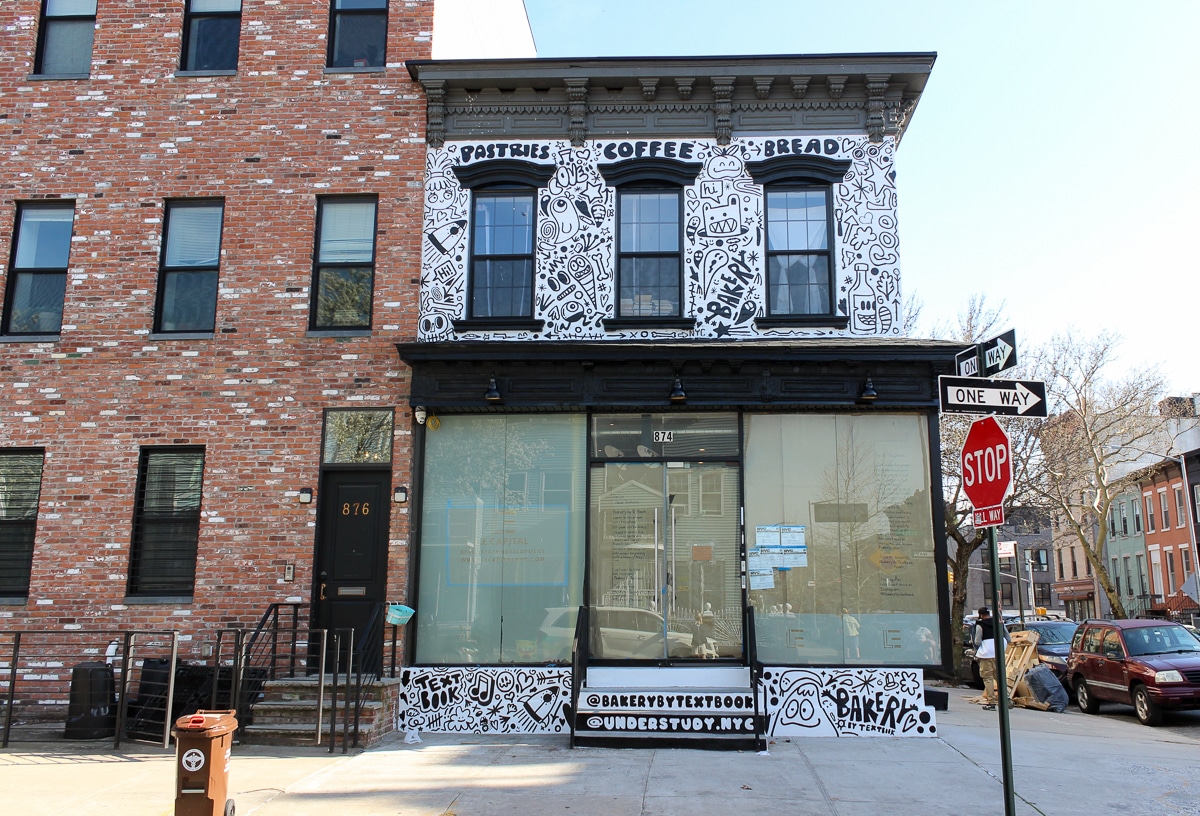Walkabout: The Mystery of the Missing Chemist
Frank M. Smith, of 351 11th Street in Park Slope, was a chemist with a factory in Brooklyn. His company made a chemical disinfectant that he sold to steam companies. He also manufactured carbolic acid for a while, also known as phenol. It is derived from petroleum and had antiseptic and medicinal uses, as well…

Frank M. Smith, of 351 11th Street in Park Slope, was a chemist with a factory in Brooklyn. His company made a chemical disinfectant that he sold to steam companies. He also manufactured carbolic acid for a while, also known as phenol. It is derived from petroleum and had antiseptic and medicinal uses, as well as industrial. It was also the suicide poison of choice for people at the turn of the 20th century. But this story isn’t about suicide, or even manufacturing. Mr. Smith was in the chemical business in 1916, when America was feeling the shortage of many different materials due to the chaos of Word War I. And that was a problem. It would turn out to be the least of his problems.
Smith was a member of New York’s Chemist’s Club, and a Mason of high standing. He was married to his wife Elsie for about eight years, and they had a comfortable home in a small brownstone in Park Slope. The war had made it impossible to obtain the materials he needed to run his chemical business, so he decided to change gears. He closed his plant and opened a pool hall on Flatbush Avenue instead. Unfortunately, the pool hall wasn’t doing all that well either. The new Flatbush Avenue subway was being constructed right near their door, and traffic was far too light.
So Mr. Smith decided to change occupations once again, this time telling Elsie that he was going to take the last of their savings, around $4,000, and buy a plantation in Cuba. Frank’s business choices would not be filling me with great confidence at that point, but Elsie trusted her husband, and looked forward to being the wife of an up and coming sugar baron. Frank sold the pool hall, and was corresponding with a man named Mr. Cole who was arranging the sale of the Cuban sugar plantation. The price was $3,950, which Frank secured from his account at the Dime Savings Bank, and had issued to him in gold certificates.
On January 24, 1916, Frank and his gold certificates got on a train bound for Key West. He had waited until his wife was out shopping, and left her a note on the table, saying “Left on the 2:15 train. Will write you later.” He was scheduled to boat to Cuba and be met by Mr. Cole, who would broker the sale of the plantation at Los Polatcols. But after two weeks Elsie never heard from Frank. She telegraphed the authorities in Havana, but they reported that he had never arrived in Cuba. Elsie turned to the New York police in a frantic effort to find Frank. They contacted Mr. Cole, who also reported that Frank had never arrived in Cuba, and had never contacted him.
Elsie feared the worst. Frank had almost $4,000 in gold certificates on him, as well as $500 in money orders and $1,000 worth of diamond jewelry on his person. He was a robbery looking to happen. He had basically cleaned out the vault, leaving Elsie only with about $400 to pay bills and live on until he returned. The police in Havana, Key West and New York were all looking for Frank W. Smith. One of the New York papers ran the story and his picture.
The same day that Frank disappeared, Miss Marguerite Jelliffe of Brooklyn left New York for her new life in Washington, D.C. She was a stenographer by trade, and had accepted a new job in Washington. She was taking the train down there, where she planned to meet her fiancé, a man named Frank M. Marshall. She had been dating Marshall for over two years, and had known him even longer. He had arranged to marry her as soon as she arrived, so the couple could begin their new lives in Washington as man and wife.
Marguerite was supposed to call or telegraph her family upon arriving, but she didn’t, and they were worried. But the next day she telegraphed and said, “Met Frank, everything all right. Will write you later.” Then she too, disappeared without a trace. After about a week or so, the family contacted the police, and armed with a description of both Marguerite and Frank, the police in both cities started a search.
When the story and photograph of Frank M. Smith hit the papers, they were seen by Marguerite’s brother-in-law in Queens. He thought Frank Smith looked very familiar. In fact, he looked just like Frank Marshall. He was so convinced of this that he took all of the photographs he had of Marshall and travelled to Brooklyn to the Smith house. He showed them to Elsie, who went to her own photo album and picked out some of the exact same pictures. They confirmed the worst – Frank Smith was also Frank Marshall.
W. G. Drake, the brother-in-law, told Elsie, and the authorities that Frank Marshall had been courting Marguerite for several years. They had met when Frank hired her to do some typing work for him. Frank had said, of course, that he was unmarried. He also told them he was a chemist, but because of the war, had closed his company, and opened a pool hall on Flatbush Avenue. He also told them that he was going to Cuba to buy a sugar plantation, but would be back in time to meet Marguerite and get married. Yep, it was definitely the same man.
The police put out descriptions of the couple. Frank was 44 years old, six feet tall, weighed 220 pounds, and had brown hair and eyes. Marguerite was 26, pretty, a little plump, with brown hair and eyes. When she left Brooklyn, she was dressed in a brown coat with a fur collar, and had a large diamond engagement ring. She also had another ring given to her by Marshall, which was a pink cameo surrounded by diamonds. She also carried a gold chatelaine purse.
Events that hadn’t made sense before now became clear. Elsie’s brother reported that he had answered the telephone at the pool hall one day, when a woman asked to speak to Frank Marshall. The brother had replied that there was no Frank Marshall there, but the woman insisted there was, and that he owned the pool hall. When told she was definitely mistaken, the woman hung up.
Elsie reported that she had found a woman’s handkerchief with the initial “M” embroidered on it in Frank’s pocket. He had laughed it off, saying the boys at the pool hall were playing a joke. She believed him, and had no idea he was leading a double life until Mr. Drake showed up at her door. Her world had been shattered. Frank had also left her destitute, with no money and no means of support beyond the couple hundred dollars he left her.
I’d like to tell you they found Frank Smith/Marshall and dragged him back to Brooklyn to face Elsie, but that never happened. The couple was never seen again. The authorities believed they perhaps had boarded a steamship to Europe, and disappeared in the chaos of war. Who knows, they could have never even made it there, and were sunk by the Germans, or maybe they never left, changed their names again, and settled in Nebraska. A good chemist could find a job anywhere. And they did have $5,000 to tide them over.
Frank disappeared in February of 1916. That April, an “E.M.S.” at 351 11th Street reported her dog, a white Eskimo Spitz, was missing. He had last been seen on Sunday. Poor Elsie, not even the dog stayed. Three years later, the house was the clubhouse for the Anti-Socialist League. Was this Elsie? If so, I can certainly understand her opposition to a political philosophy that advocated sharing. She had certainly shared enough. GMAP











What's Your Take? Leave a Comment